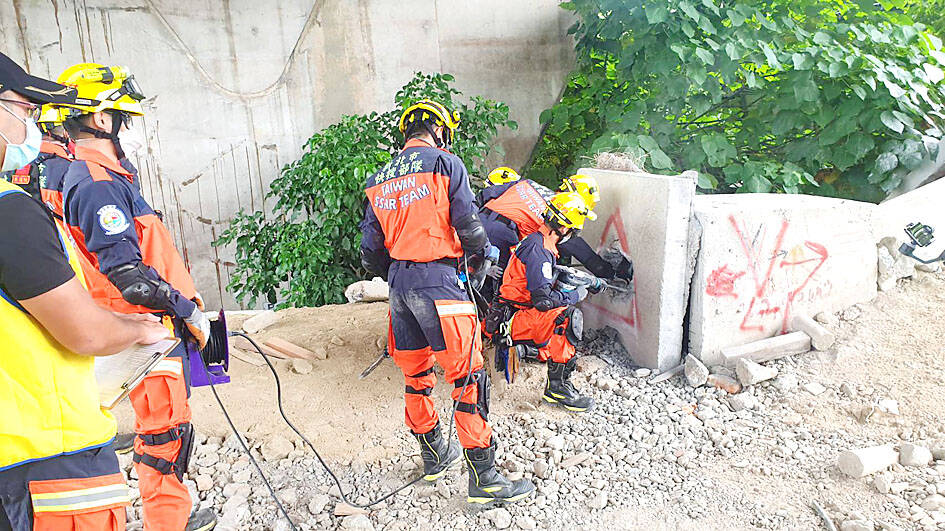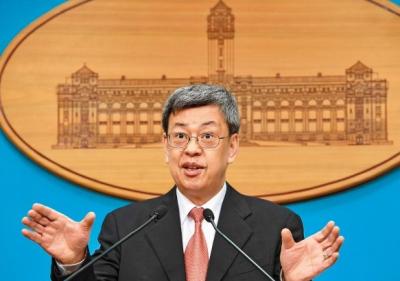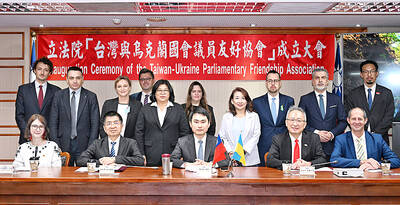A magnitude 5.9 earthquake struck off Taiwan’s east coast at 3:24am yesterday, the Central Weather Bureau said, adding that the nation has seen more active and frequent seismic activity this year.
The hypocenter of yesterday’s earthquake was 59.3km east of Hualien County Hall at a depth of 17.9km, data collected by the bureau’s Seismological Center showed.
The earthquake was felt nationwide, with the largest intensity reaching level 4, the bureau said.

Photo courtesy of the New Taipei City Fire Department
No casualties were reported as of press time last night.
Residents on the east coast are still recovering from severe infrastructure damage caused by a magnitude 6.8 earthquake on Sept. 18.
Yesterday’s earthquake was caused by the Philippine Sea Plate subsiding into the Eurasian Continental Plate, Seismological Center Director Chen Kuo-chang (陳國昌) said, adding that it was not related to the Sept. 18 quake.
However, the epicenter of yesterday’s earthquake was almost in the same region as that of a magnitude 6.06 earthquake on Jan. 3, Chen said.
Since 1973, only 25 earthquakes exceeding magnitude 5.5 at a depth of less than 30km have been detected in that region, eight of which exceeded magnitude 6, Chen said.
The biggest one that occurred in the region was a magnitude 6.8 earthquake on March 31, 2002, he said.
Construction on the Taipei 101 building was suspended as a crane on the building’s roof fell after the quake, killing five workers and damaging multiple vehicles, Chen said.
While certain locations, such as Taipei’s Xinyi District (信義), are far from the epicenter, residents tend to experience intense shaking due to seismic site effects, in which seismic waves are amplified in superficial geological layers, he said.
Although yesterday’s earthquake nearly reached magnitude 6, it is not likely to trigger many aftershocks, Chen said.
“The earthquake occurred in a geologically fragmented zone, so aftershocks should occur quickly afterward. Our estimate is that no aftershock will occur if nothing happened the day after the earthquake. If there is an aftershock, it could reach magnitude 4.5 or greater,” he said.
Chen said that aftershocks triggered by the earthquake on Sept. 18 have shown signs of gradually subsiding, although the bureau still recorded four aftershocks on Monday, which was “unusual.”
Seismic activity around Taiwan proper has been more active and frequent this year, Chen said.
Taiwan has an average of two or three earthquakes exceeding magnitude 6 per year, but eight earthquakes larger than magnitude 6 have been recorded so far this year, he said.
“As of yesterday, 55 earthquakes of magnitude 5 to 6 had occurred this year. The average, however, is 24 to 25 per year,” Chang said, adding that more seismic activity is expected during the remainder of this year.

Several Chinese Nationalist Party (KMT) officials including Chairman Eric Chu (朱立倫) are to be summoned for questioning and then transferred to prosecutors for holding an illegal assembly in Taipei last night, the Taipei Police said today. Chu and two others hosted an illegal assembly and are to be requested to explain their actions, the Taipei City Police Department's Zhongzheng (中正) First Precinct said, referring to a protest held after Huang Lu Chin-ju (黃呂錦茹), KMT Taipei's chapter director, and several other KMT staffers were questioned for alleged signature forgery in recall petitions against Democratic Progressive Party (DPP) legislators. Taipei prosecutors had filed

Taiwan would welcome the return of Honduras as a diplomatic ally if its next president decides to make such a move, Minister of Foreign Affairs Lin Chia-lung (林佳龍) said yesterday. “Of course, we would welcome Honduras if they want to restore diplomatic ties with Taiwan after their elections,” Lin said at a meeting of the legislature’s Foreign Affairs and National Defense Committee, when asked to comment on statements made by two of the three Honduran presidential candidates during the presidential campaign in the Central American country. Taiwan is paying close attention to the region as a whole in the wake of a

President William Lai (賴清德) has appointed former vice president Chen Chien-jen (陳建仁) to attend the late Pope Francis’ funeral at the Vatican City on Saturday on his behalf, the Ministry of Foreign Affairs said today. The Holy See announced Francis’ funeral would take place on Saturday at 10am in St Peter’s Square. The ministry expressed condolences over Francis’ passing and said that Chen would represent Taiwan at the funeral and offer condolences in person. Taiwan and the Vatican have a long-standing and close diplomatic relationship, the ministry said. Both sides agreed to have Chen represent Taiwan at the funeral, given his Catholic identity and

Lawmakers from the Democratic Progressive Party (DPP) yesterday established a friendship group with their counterparts in Ukraine to promote parliamentary exchanges between the two countries. A ceremony in Taipei for the Taiwan-Ukraine Parliamentary Friendship Association, initiated by DPP Legislator Chen Kuan-ting (陳冠廷), was attended by lawmakers and officials, including Deputy Minister of Foreign Affairs Francois Wu (吳志中) and European Economic and Trade Office in Taiwan Director Lutz Gullner. The increasingly dire situation in Ukraine is a global concern, and Taiwan cannot turn its back when the latter is in need of help, as the two countries share many common values and interests,